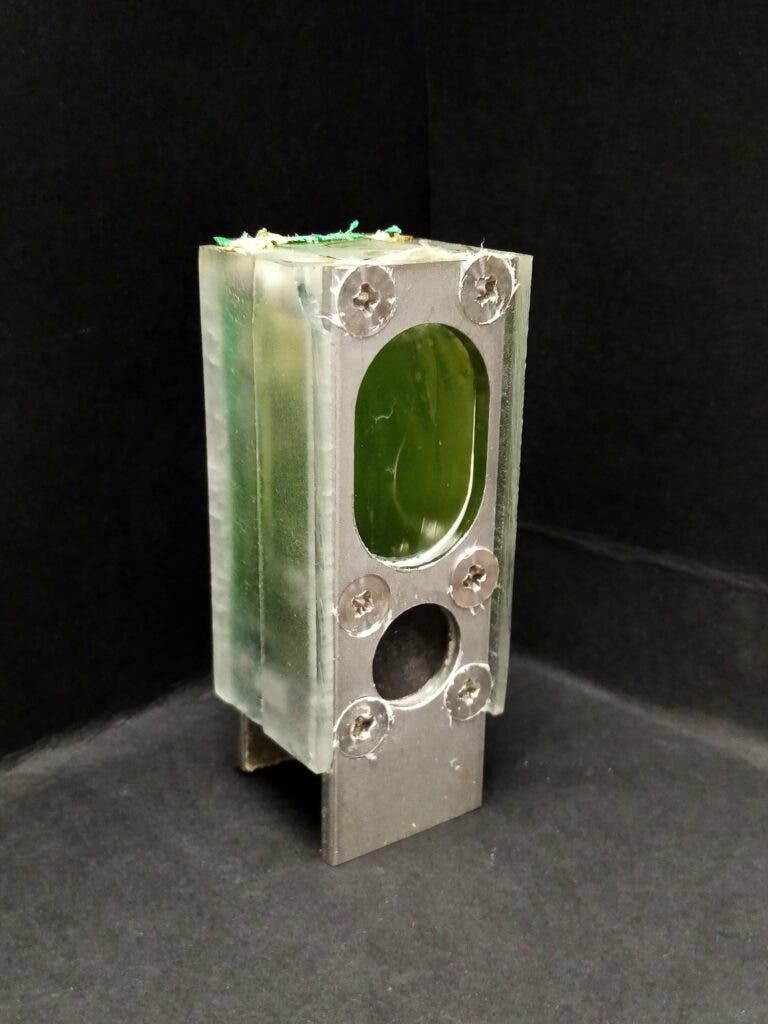Green computing is taking on a whole new meaning: researchers at the University of Cambridge have developed an algae-filled power cell that has successfully powered a microprocessor for a year now — and it’s still going.

Synechocystis is a widespread species of photosynthesizing blue-green algae. As it captures energy from the sun, these algae generate a very small electrical current. The cell, after being filled to the brim with Synechocystis, uses an aluminum electrode to tap into these biologically-generated currents and power a microprocessor — the part of a computer that does the computing.
The system is meant to prove that it is possible to operate small electronic devices in a clean and sustainable fashion using only water, ambient light, and common, inexpensive materials. It’s also almost fully recyclable, to boot!
Gaming on algae
“The growing Internet of Things needs an increasing amount of power, and we think this will have to come from systems that can generate energy, rather than simply store it like batteries,” said Professor Christopher Howe in the University of Cambridge’s Department of Biochemistry, joint senior author of the paper.
“Our photosynthetic device doesn’t run down the way a battery does because it’s continually using light as the energy source.”
The algae cell is comparable in size to an AA battery, and designed to be easily replicated and produced on-masse. Its inventors envision hundreds of thousands of such batteries powering Internet of Things devices around the world. Boasting an incredibly high degree of autonomy for a power-generation system, the team believes it would be most useful in off-grid or remote locations, where even small amounts of power can make a huge difference.
The Internet of Things (IoT) is the vast — and growing — network of electronic devices that collect and share data in real-time through the Internet. There are estimated to be billions of devices that are part of the IoT, and they range from the mundane, such as smartwatches, to niche and specialized equipment such as sensors in power stations. And the number of such devices is estimated to increase rapidly in the future. The algae-cell aims to give designers an energy source that can power such devices anywhere and reliably.
In a proof-of-concept experiment, the team used the algae cell to power an Arm Cortex M0+ microprocessor, which is often used to provide the computing power in Internet of Things devices. It was tested in both domestic and semi-outdoor conditions under natural light and natural temperature fluctuations. It was kept in continuous use for six months.
The team reports being “impressed” by how constant the stream of energy provided by the cell was over time. The long-lasting nature of the cell was also a welcome surprise, as the team initially assumed it would only work for a few weeks.
The cell does not require any feed, as the algae produce its own food through photosynthesis. It can even keep producing power during periods of darkness. The researchers believe this is because the algae process some nutrients even in darkness, ensuring a steady supply of electrical current during this time.
Such a power cell opens the way to an alternative method of powering IoT devices — the traditional approach of using lithium-ion batteries would be impractical, according to the team. Such an approach would require three times more lithium than is produced annually worldwide, they explain. Traditional solar cells, which would be a viable alternative, require hazardous materials, can have adverse environmental effects, and only produce energy when exposed to direct sunlight.
The paper “P. Bombelli et al, Powering a microprocessor by photosynthesis” has been published in the journal Energy & Environmental Science.
Was this helpful?



